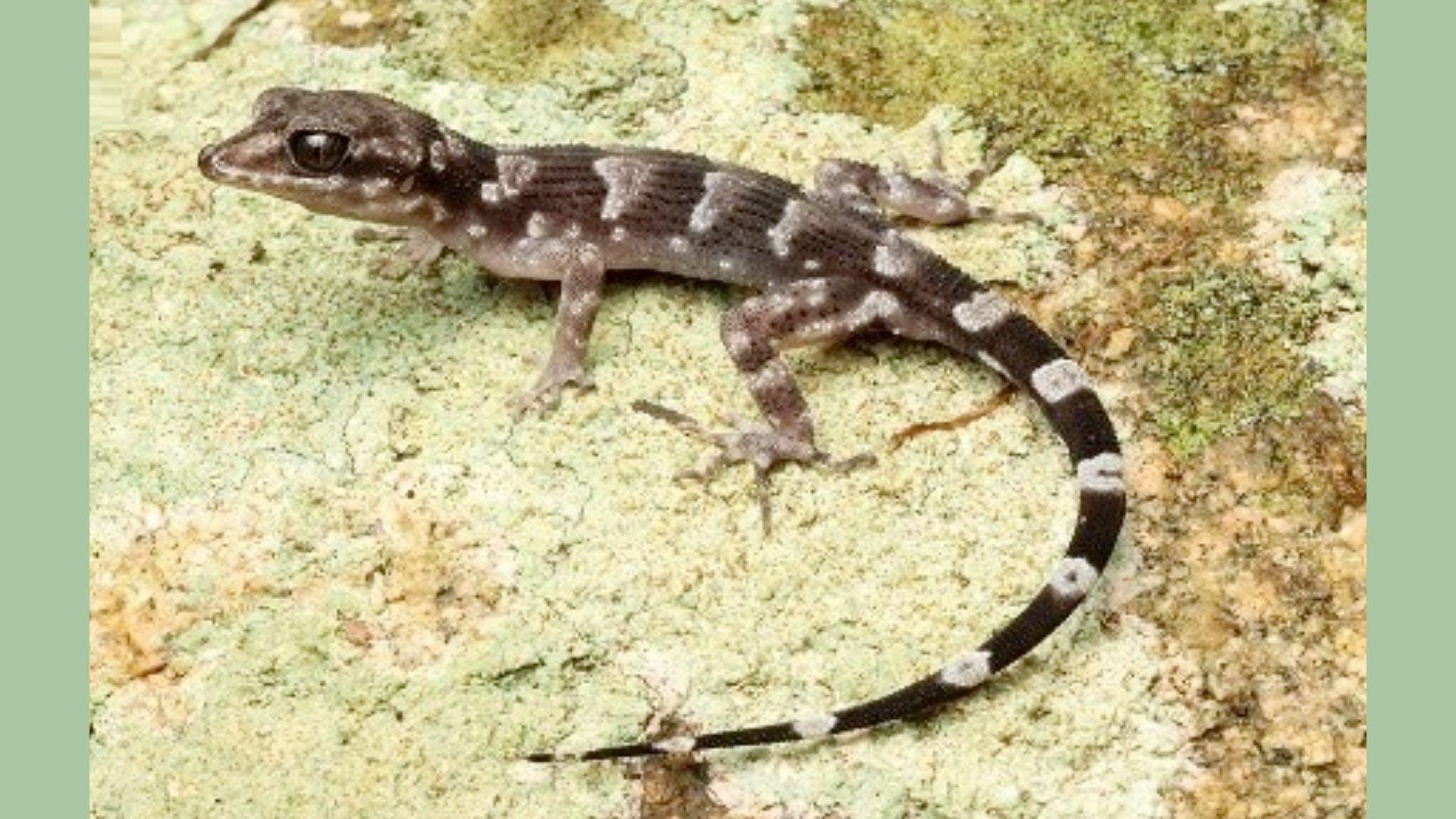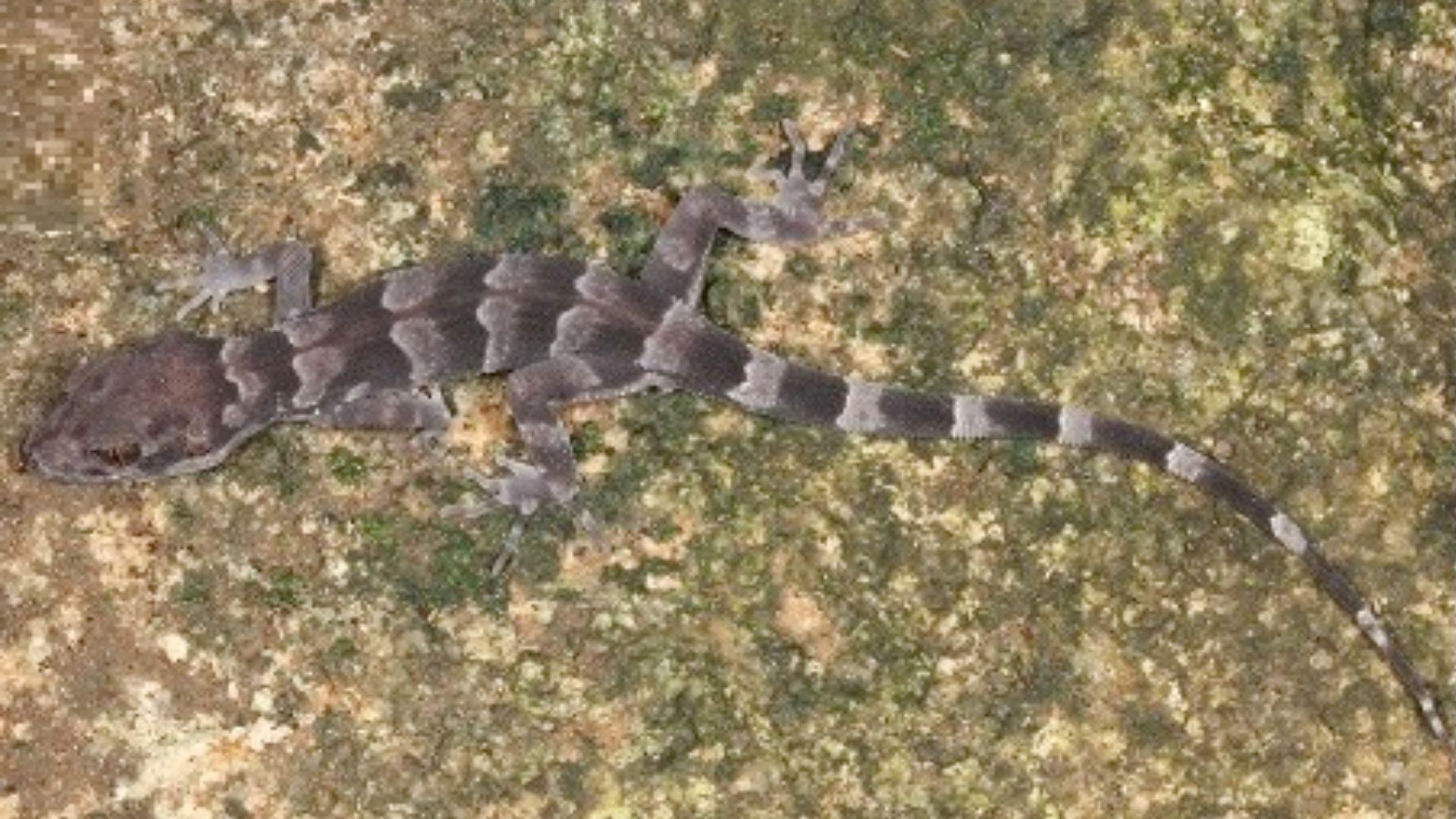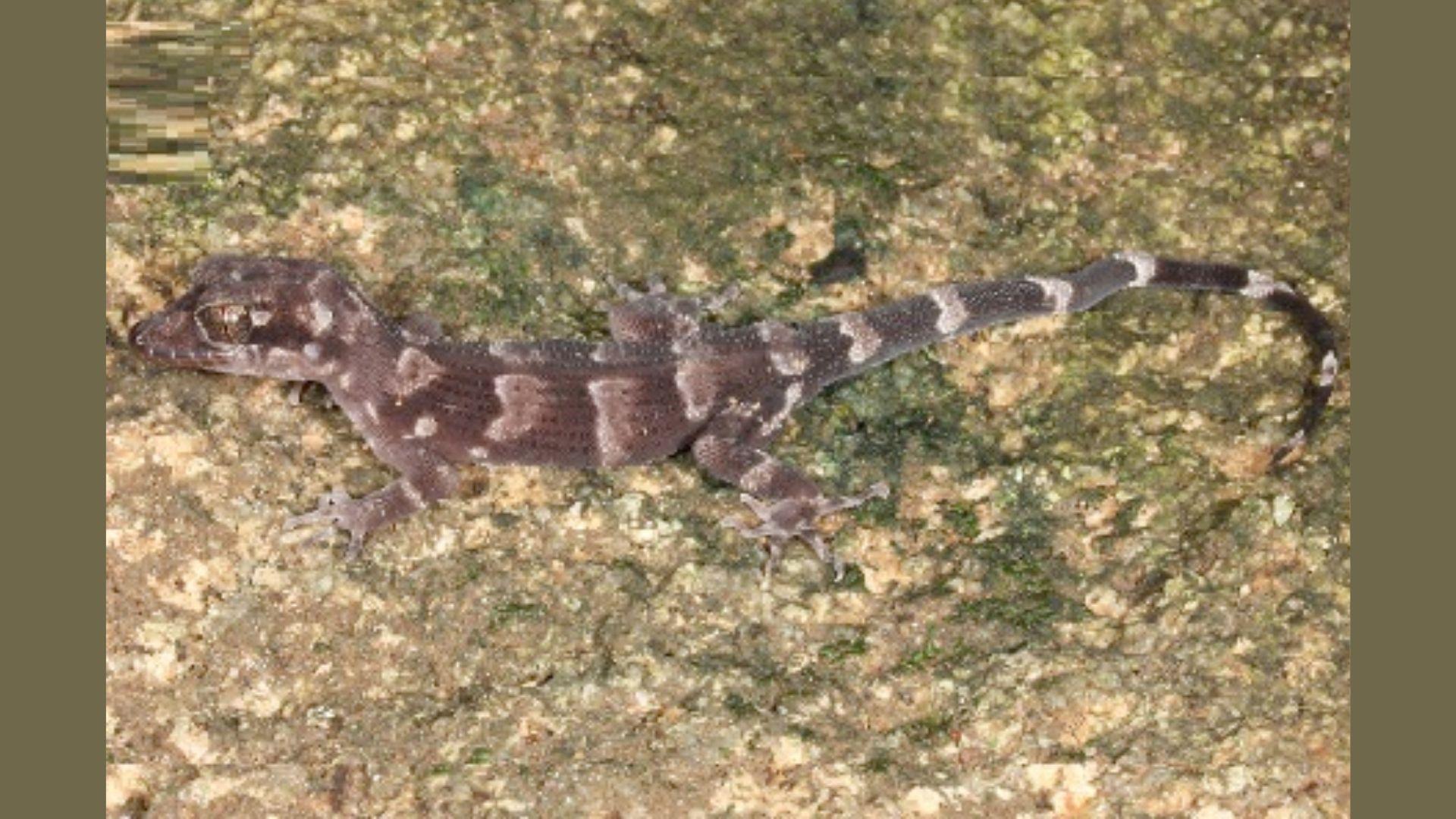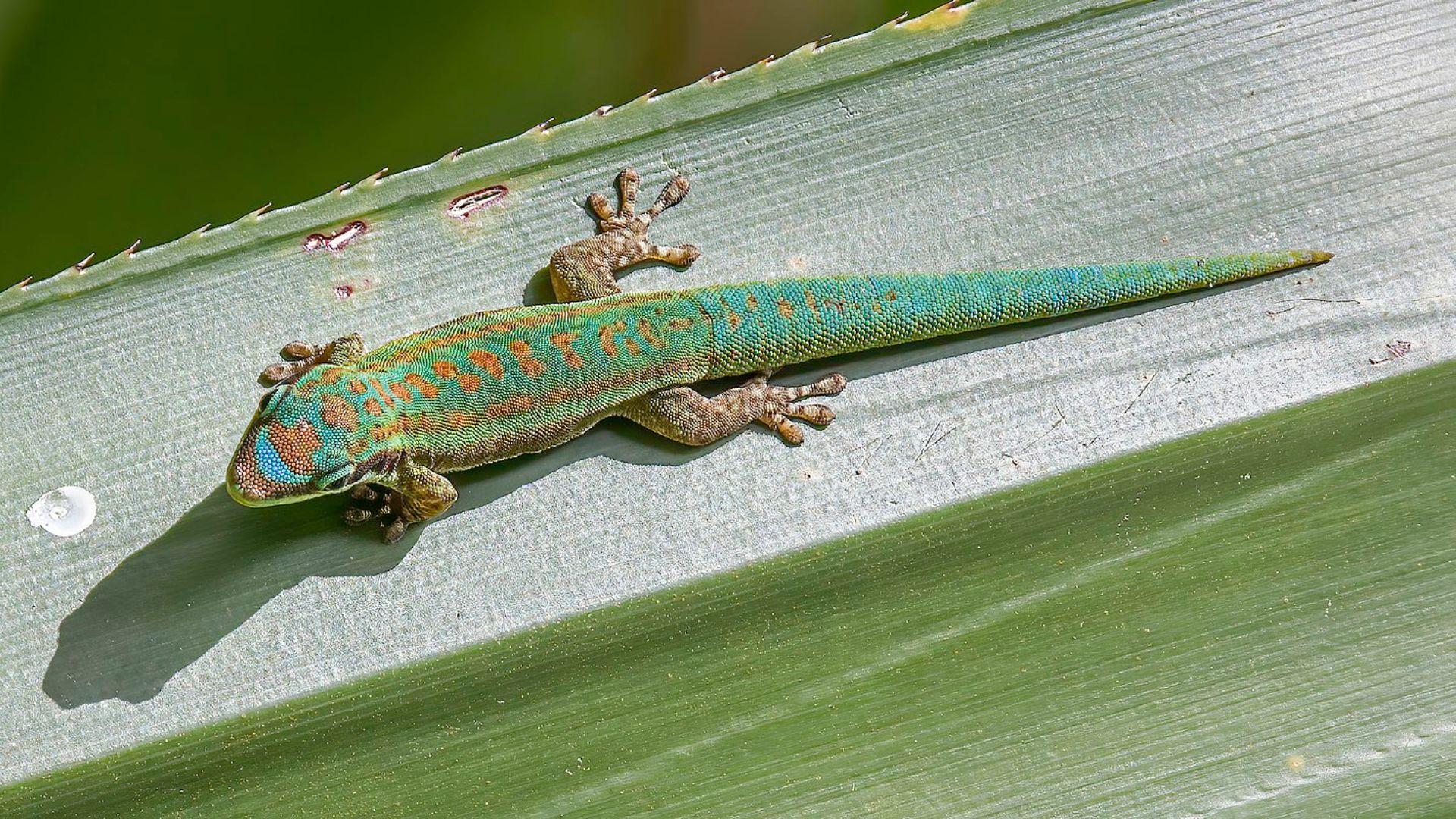The Earth is an amazing and fascinating place. There is still so much that humans haven’t discovered and explored. These ecological mysteries include species of animals that have yet to be documented.
Recently, Conrad Hoskin—a herpetologist and associate professor at James Cook University’s College of Science and Engineering—published a groundbreaking study on his research expedition to Dauan Island in the northern Torres Strait of Australia. There, he discovered a fascinating new creature.
Discovering a Gecko

During a wildlife survey on Dauan Island, Hoskin and his team discovered a remarkable reptile hiding among a pile of boulders. This creature had prominent eyes and a pattern of striking thick stripes.
This fascinating creature turned out to be a previously unknown species of gecko. Under certain lighting conditions, the gecko’s eyes had a shimmering golden hue, adding to its distinctive and interesting appearance.
Introducing the Simakal Gecko

The study, which was co-written by Hoskin and his fellow researchers Alexander Davies and Kieran Aland, was published on August 27th in the scientific journal Zootaxa.
In their report, the researchers describe the simakal gecko as having a “beaky” head and that it is an “exceptionally unique” creature. They noted its “banded pattern” and “slender, elongate form.” Given the gecko’s small size—just shy of 2 inches from snout to tail tip—it’s remarkable that the scientists were able to find it at all.
Behind the Name

To name the newly discovered gecko, the researchers sought input from local Torres Strait Islanders. They chose the name “simakal,” which refers to “Simakal Pad,” the indigenous term for the island’s mountain. This mountain is also known as Mount Cornwallis and holds the distinction of being Queensland’s northernmost granite peak.
By selecting this name, the researchers honored both the local cultural heritage and the geographic significance of the area. The name not only reflects the gecko’s place of discovery but also pays tribute to the island’s natural landmarks.
An Unknown Conservation Status

As of now, the researchers do not know how common the simakal gecko is. The research team recommended that the IUCN Red List of Threatened Species lists this little reptile under “Data Deficient.”
“‘Nactus simakal’ is currently known from a very small area and further surveys and assessment of current and potential threats are required to assess the conservation status of this species,” Hoskin, Davies, and Aland explained.
A Crucial Environmental Role

While some gecko species are known to be invasive, the newly identified simakal gecko seems to be indigenous to Dauan Island and may not be found anywhere else on Earth. It seems that this unique and native gecko exclusively resides in this specific region of Australia.
In their native environments, geckos play a crucial ecological role by consuming insects and controlling pest populations. This natural pest management helps maintain the balance of ecosystems, benefiting the overall health of their habitat.
Pollinator Geckos

Certain geckos even contribute to their ecosystems as natural pollinators by feeding on plant nectar. As they eat from flowers, pollen collects on their snouts and is transferred to other plants, aiding in the pollination process.
A notable example of this is found on the island of Mauritius, located east of Madagascar. Here, blue-tailed day geckos play a vital role in pollinating the rare plant, Trochetia blackburniana. Their presence is crucial; without these geckos, the striking red-flowered plant could face extinction on the island.
Hoskin and Conservation

According to Hoskin’s biography on the James Cook University’s website, the herpetologist’s love of animals is charged by his passion for conservation. “To date, I’ve done a lot of evolutionary biology and species discovery but I’m increasingly focusing on conservation projects,” he explained.
“My research and teaching interests focus on biodiversity: what’s out there, how we discover and describe it, how it arises and adapts through time, and how we can conserve it,” Hoskin wrote in his bio.
Research to Make the World a Better Place

When not discovering a new species of gecko, Hoskin said, “I’m very interested in speciation and rapid adaptation, including to human-induced change like climate change and invasive species.”
Hoskin has focused his research on several critical areas: investigating how climate change affects native fruit fly populations, tracking the effects of invasive geckos and toads, and working to rescue frogs from the devastating chytrid disease.
The Simakal Gecko and Our Earth

The discovery of the simakal gecko by Conrad Hoskin and his team is a compelling reminder of the vast, unexplored aspects of our natural world. This new species highlights the ongoing need for exploration and conservation.
As we continue to discover and understand the diverse life forms on our planet, it becomes clear that each finding enriches our knowledge and emphasizes the importance of protecting our ecosystems for future generations.

